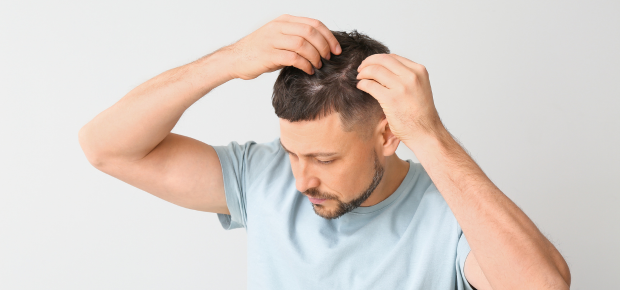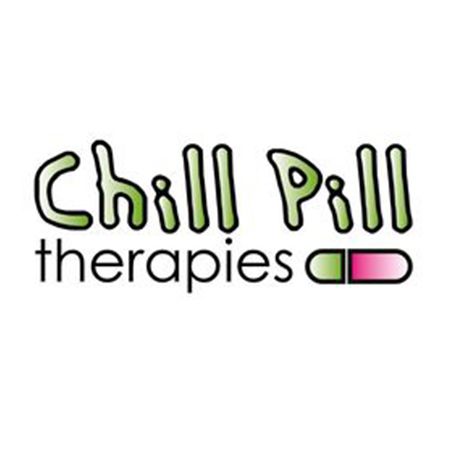
Ever thought your feet could help with hair growth? It might sound odd at first, but reflexology – that relaxing foot massage you might already love – could actually support a healthier scalp and stronger hair. By focusing on certain pressure points, reflexology may improve circulation, restore balance, and even promote regrowth if you’re noticing more hair in the drain than usual.
Let’s walk through how this traditional therapy works, the reflex points involved, and why it might be a gentle, natural option for anyone dealing with hair loss.
What is reflexology?
Reflexology is a therapeutic practice rooted in Traditional Chinese Medicine (TCM). It sees the body as divided into ten longitudinal zones, with specific reflex points on the feet, hands, and ears that correspond to internal organs and systems. By stimulating these points, reflexologists aim to clear blockages, increase energy flow, and support healing throughout the body.
It’s not just about feeling relaxed (though that’s a huge plus). Reflexology has been linked to:
-
Better blood circulation
-
Pain and tension relief
-
Hormonal balance
-
Improved nerve function
-
Support for detoxification and lymphatic drainage
One of the biggest wins for people dealing with hair loss is improved blood flow. When circulation is sluggish, it can mean fewer nutrients and less oxygen reaching your scalp. That, in turn, can weaken hair follicles. So, getting things moving again might just help give your hair the fuel it needs.
Understanding hair loss and its common causes
Everyone loses hair – around 50 to 100 strands per day is perfectly normal. But when you start seeing more hair on your pillow or in the shower, it might point to a deeper issue.
Common causes of hair loss include:
-
Hormonal imbalances (thyroid, menopause, and PCOS are big ones)
-
Stress and anxiety
-
Poor nutrition or crash dieting
-
Autoimmune conditions like alopecia areata
-
Genetics (especially in male and female pattern baldness)
-
Illness, surgery, or medications
-
Constant styling, tight hairstyles, or heat damage
The good news is that some of these are temporary and reversible – and that’s where supportive therapies like reflexology may come into play.
How reflexology may help prevent hair loss
While reflexology doesn’t directly treat hair loss, it may support the body in ways that improve scalp health and reduce contributing factors.
For example, a study published in the Iranian Journal of Nursing and Midwifery Research in 2020 explored how reflexology helped cancer patients experiencing chemotherapy-related hair loss. After three months of regular treatment, many participants reported an improvement in hair density and growth.
Here’s why it may work:
-
Pressure is applied to points connected to hormone-producing glands and organs
-
Circulation improves, delivering more oxygen and nutrients to hair follicles
-
The nervous system relaxes, which lowers stress hormones and inflammation
-
Detox organs (like the liver and kidneys) are stimulated, potentially reducing toxin buildup that could impact hair health
In short, it’s a holistic way of helping the body rebalance – and your scalp benefits too.
How reflexology helps manage stress-related hair loss
Stress doesn’t just mess with your mood – it can push hair follicles into the resting phase, leading to excessive shedding. This type of loss is often sudden and noticeable, especially during or after intense life events.
Reflexology offers stress relief by:
-
Triggering the parasympathetic nervous system (aka your body’s rest-and-digest mode)
-
Increasing the release of endorphins
-
Improving lymphatic flow and reducing muscle tension
-
Encouraging better sleep
Think of it as giving your nervous system a mini reset. And when stress goes down, hair health often improves too.
Reflex points linked to hair growth
Here are some reflex areas commonly stimulated to support hair health:
Nail beds
It might sound strange, but rubbing your fingernails together for a few minutes daily is a practice believed to improve scalp circulation. In reflexology, the nerve endings under the nails are said to connect with the hair follicles on your scalp.
Baihui point (GV20)
Located at the top of the head, this point is traditionally used to boost brain function and calm the mind. Massaging it may help improve circulation to the crown – where thinning often starts.
Taiyang point
Found at your temples, Taiyang is great for relieving stress and tension. Reducing stress hormones may help bring your hair cycle back to balance.
Foot reflex zones
Reflexologists often apply pressure to the areas linked to the:
-
Liver (detoxification and hormone balance)
-
Kidneys and adrenal glands (stress hormones)
-
Intestines and stomach (nutrient absorption)
-
Pituitary gland (hormonal control)
-
Ovaries/testes (androgen regulation)
These aren’t random – each of these systems affects your hair either directly or indirectly.
Reflexology and hormonal balance for hair growth
Hormones are like conductors in an orchestra. When they’re out of tune, everything – including your hair – can fall apart. Hormonal imbalances caused by thyroid conditions, menopause, or androgens like DHT can shrink follicles and slow growth.
Reflexology targets key hormone-related glands:
-
Pituitary gland: The ‘master gland’ that controls most hormone functions
-
Thyroid: Regulates metabolism and impacts hair texture and growth
-
Adrenal glands: Produce cortisol and other stress hormones
-
Ovaries/testes: Affect oestrogen, progesterone, and testosterone
By applying pressure to the corresponding reflex zones, the therapy may help regulate hormone levels naturally. This isn’t a quick fix, but over time, it might improve your body’s hormonal rhythm and support your hair's natural cycle.
The role of nutrition and reflexology in hair health
We all know that healthy hair needs the right fuel. Protein, iron, vitamin D, zinc – they all matter. But if your digestion is sluggish or your gut isn’t absorbing nutrients properly, your hair doesn’t get what it needs.
Reflexology may help by supporting:
-
Digestion (stimulating stomach, pancreas, and small intestine reflex points)
-
Liver function (detoxification of hormone-disrupting chemicals)
-
Circulatory pathways to deliver nutrients
Pairing reflexology with a balanced, whole-food diet can help you cover both sides of the equation: intake and delivery.
Reflexology for men with hair loss
Hair loss in men often shows up as receding hairlines or thinning at the crown. While genetics and DHT (a form of testosterone) are usually the culprits, stress and lifestyle still play major roles.
Reflexology can be helpful for men too – especially when sessions are focused on:
-
Endocrine glands (pituitary, thyroid, adrenal)
-
Liver and digestive points for better detoxification
-
Areas connected to the scalp and circulatory system
It’s not about reversing baldness, but rather slowing the process and supporting overall health – which often reflects in the hair.
Can you perform reflexology on yourself?
Yes, you can – though it won’t be as comprehensive as working with a trained reflexologist.
Some simple techniques to try at home:
-
Roll a tennis ball under your foot for 5–10 minutes daily
-
Massage your fingertips or gently press the nail beds
-
Use a reflexology chart to identify pressure points you can reach
-
Try a wooden or silicone foot roller to stimulate multiple zones at once
It’s best used as a supplement to professional care, especially if your hair loss is tied to complex hormonal or autoimmune issues.
Blending reflexology with other holistic hair remedies
To get the most out of reflexology, consider combining it with other natural approaches:
-
Essential oils: rosemary, peppermint, and lavender may stimulate the scalp
-
Scalp massage: a daily 5-minute session boosts blood flow and relaxation
-
Mindfulness practices: meditation, yoga, and breathwork reduce stress hormones
-
Sleep and hydration: two underrated pillars of healthy hair
-
Regular movement: even light exercise can help regulate hormones
These work best when done consistently – no need to do them all at once. Think of them as building blocks for long-term change.
Final thoughts
Hair loss isn’t just about what’s happening on your head – it’s often a sign of what’s happening inside your body. Reflexology offers a gentle, non-invasive way to bring the body back into balance, support key systems, and even promote better hair growth over time.
It’s not a silver bullet, but it’s one piece of a bigger puzzle. Pair it with good nutrition, healthy habits, and stress management for the best results. And if you’re curious about trying it, book a session with a qualified reflexologist who can guide you through a personalised plan.
Want to explore more natural ways to support your hair and body? Check out the Natural Therapy Pages’ resources on hair loss treatments and connect with practitioners near you.









